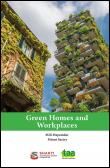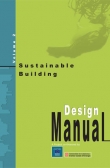Improving Earthquake and Cyclone Resistance of Structures: guidelines for the Indian subcontinent
Book Details
In spite of mankind’s triumph in taming nature for his survival and benefit, succumbing to the vagaries of nature has become a regular global concern. Out of the array of different catastrophes, earthquakes and cyclones together are responsible for an overwhelming majority of the global damages caused by natural disasters in the last decade, leaving millions homeless. The loss of property and life are primarily due to failure of structures to withstand such catastrophes, caused often due to lack of implementation of a few guidelines. The evolution of these guidelines is rooted in understanding the principles of the mechanics that regulate the behaviour of the structures under lateral dynamic loading imparted by earthquakes and cyclones.
In this context, Improving Earthquake and Cyclone Resistance of Structures: guidelines for the Indian subcontinent, is an attempt to introduce guidelines for the types of building structures frequently observed and built in the Indian subcontinent as well as in other developing countries. The guidelines are meant for both architectural and structural features, and include constructional aspects as well. The book introduces these guidelines in such a manner that all aspects can be properly understood, related, and implemented by practising engineers and architects. On the whole, the book may help develop awareness and sensitized technical manpower for combating the threats posed by natural disasters like earthquakes and cyclones.
Key Features
• Enumerates the guidelines for improving earthquake and cyclone resistance of building structures
• Brief overview on the behavioural response of buildings to earthquakes and windstorms from physical standpoints
• Special highlight on the important provisions of the Indian seismic and wind codes with mathematical details
• Focus on various damage control measures and conservation strategies
Target Audience
-
Students and professionals of civil engineering and architecture
Table of Contents
Introduction
SECTION 1 EARTHQUAKES
• Occurrence of earthquake: a geological perspective
• Performance of a building during earthquakes: the philosophy
• Typical moderate earthquakes: lessons learnt from case studies
• Guidelines for brick masonry buildings
• Guidelines for ductile detailing of reinforced concrete buildings
• Guidelines for elevated tanks and dams lifeline structures
• Quantification of seismic design forces
SECTION 2 CYCLONES
• Occurrence of tropical cyclones: the North Indian Ocean
• Performance of buildings during cyclones: the philosophy Sidr-affected non-engineered buildings: lessons learnt from case studies
• Cyclone-resistant buildings: general guidelines
SECTION 3 REMEDIAL MEASURES
• Rapid Visual Screening
• Retrofitting buildings
Keywords
You may also like...
-
 Nutraceuticals in Human Health: let food be thy medicine and medicine be thy food
Regular Price 299.00
Special Price 270.00
Nutraceuticals in Human Health: let food be thy medicine and medicine be thy food
Regular Price 299.00
Special Price 270.00
-
 Green Homes and Workplaces
Regular Price 299.00
Special Price 270.00
Green Homes and Workplaces
Regular Price 299.00
Special Price 270.00
-
 GRIHA Version 2019: The Sustainable Habitat Handbook (6 Volume Set)
Regular Price 11100.00
Special Price 9990.00
GRIHA Version 2019: The Sustainable Habitat Handbook (6 Volume Set)
Regular Price 11100.00
Special Price 9990.00
-
 Sustainable Buildings - Design Manual: Vol 2
Regular Price 695.00
Special Price 626.00
Sustainable Buildings - Design Manual: Vol 2
Regular Price 695.00
Special Price 626.00


